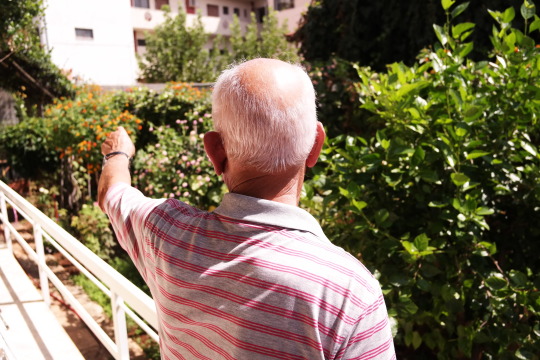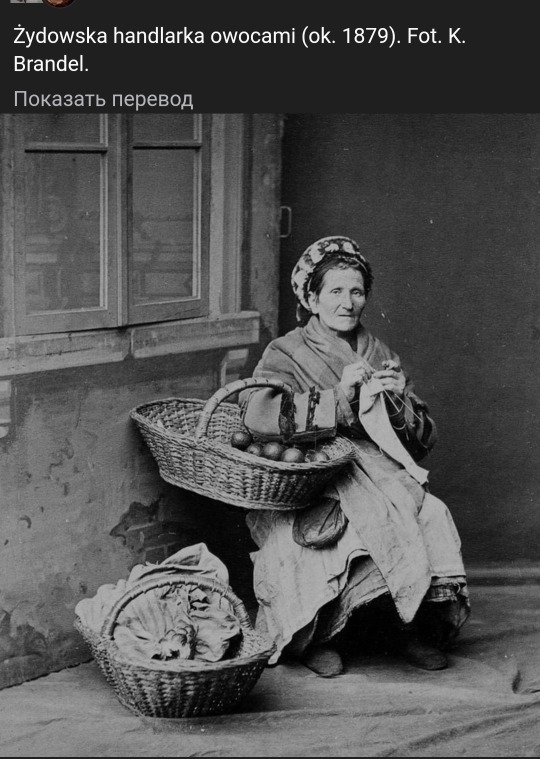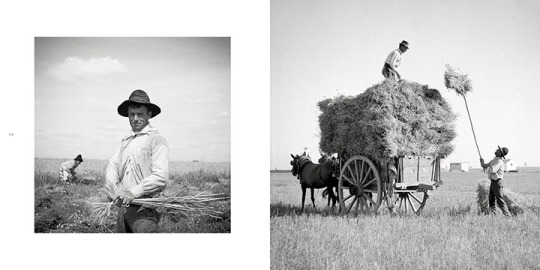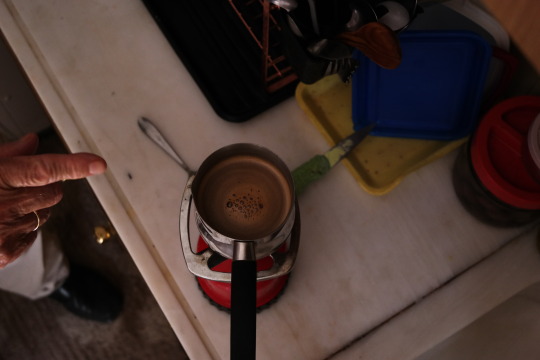#ethnographic photography
Explore tagged Tumblr posts
Text
1K GIGI Prompts Collections 'Ethnic Portrait: Vibrant Heritage in Nature's Embrace' 5823 Free 10 pages out of 1000 pages
Get Free 10 pages MTMEVE00554G_84_0001 – 1K GIGI Prompts Collections – Ethnic Portrait, Vibrant Heritage in Nature’s Embrace 5823 10PagesDownload 1K GIGI Prompts Collections ‘Ethnic Portrait: Vibrant Heritage in Nature’s Embrace’ 5823 series provides two documents, one document is 10 pages of prompts in 1000 pages, available for free download. One document is the complete 1000 pages of prompts,…
#blurred background#cultural influence#cultural practices#documentary photography#ethnographic photography#intricate patterns#natural lighting#portrait-style photograph#realistic portrayal#tribal attire#vibrant colors
0 notes
Text


έλα να σου δείξω τον κήπο
Kiato, Greece / September 2023
#samsungnx300#ethnographical photography#ethnography#social documentary#summer in greece#greece#kiatokorinthias#kiato#grandpa#greekgrandpa#garden
20 notes
·
View notes
Text

Holy shit it's her. Żydówka z pomarańczami (1881)

#I love you prewar Polish photography group#I didn't know she was based on an ethnographic image#Fascinating case study where a photograph preceded an oil painting#And the painting became an interpretation of the photograph#Reverse modernity paradigm#Gd I love the turn of the century
10 notes
·
View notes
Text

Ethnographic museum in Doha, Qatar
Qatari vintage postcard
#tarjeta#postkaart#sepia#doha#museum#qatari#carte postale#ansichtskarte#briefkaart#photo#photography#postal#postkarte#qatar#vintage#postcard#historic#ethnographic#ephemera
2 notes
·
View notes
Photo

Michel Leiris : Dogon. Masques du dama. L'Afrique fantôme. 1931. #Africa #mask #masks #1930s #photo #portraitphotography #Mali #Dogon #ethnography #culture #art #ethnographic #photograph #photography https://www.instagram.com/p/Cm8gWyHsct_/?igshid=NGJjMDIxMWI=
#africa#mask#masks#1930s#photo#portraitphotography#mali#dogon#ethnography#culture#art#ethnographic#photograph#photography
24 notes
·
View notes
Text
Cetinje
The former capital until 1946, Cetinje was one of my favourite places in Montenegro. It was compact, and filled with lovely buildings and interesting museums. The old town centre is pedestrianised, and there isn’t much traffic anywhere else. A day there was the perfect amount of time to see literally everything. The best views of Cetinje are from Eagle Rock, which felt harder to climb that it…

View On WordPress
#Billiard Palace#Blue Palace#British Embassy#Castle Church#Cetinje City Hall#Djukanovic Palace#Eagle Rock#Ethnographic Museum of Montenegro#French Embassy#King Nicholas Museum#Ministry of Culture#Monastery of St Paul#Money Museum#Montenegro#National Museum of Montenegro#photography#Relief of Montenegro#Russian Embassy#travel#Vlaška Church
0 notes
Text

Woah. Not exaggerating: The very same week you tagged me here, I was submitting a final draft paper about spectacle and British use of animal imagery and caricatures of South Asian resistance, especially on stages and in "ethnographic" exhibitions. Part of this involved the weaponization of spectacle, media, and public display. And part of this involved British imagination of "exotic" animals. And the article shown here kinda invokes both of those subjects.
That afternoon, I had been reading through a 2012 article with new-to-me info about the staging of theatre-esque mass trials/executions of Thugee by British administrators 1820s-1850s. (More on that below.)
In the pictured article/link shown here, similarly, Shanahan describes fig trees and mass hangings of Indian rebels. He lists about a dozen instances of when British authorities used fig trees to perform quasi-ritualized mass executions between 1806 and 1871.
Among them, he notes two in particular:
1857, hanging 144 rebels from a single tree in Nanaro Park at Kanpur (Shanahan cites a T!mes of !nd!a article, which itself cites a history department professor at Christ Church College)
March 1860, hanging 257 rebels from a single tree in Bareilly, Uttar Pradesh, in retaliation for their revolt in May/June 1857, when rallying under Khan Bahadur Khan (Shanahan again cites T!mes of !nd!a, who cite an ancient history and culture professor at Mahatma Jyotiba Phule Rohilkhand University)
---
The same afternoon you tagged me, I was straight-up reading:
Maire ni Fhlathuin, "Staging Criminality and Colonial Authority: The Execution of Thug Criminals in British India." Nineteenth Century Theatre and Film, Volume 37, Issue 1, October 2012.
She "examines the staging and response to the public executions of thugs, focusing on the British authorities' 'scripting' of the execution ritual (as documented in East India Company records and the writings of the officials involved) to include [...] the crowd's appreciation of the eradication of that criminality."
---
British animalization and/or dehumanization in depictions of South Asia, what they both call "interspecies/multispecies empire," more directly explored by Rohan Deb Roy (insects/bugs in India) and Jonathan Saha (elephants/cattle in Burma). But another thing I had been referencing in my own little paper was British fixation on re-enacting the defeat of Indian rebels, which you might especially notice in stage plays about Tipu Sultan (the "Tiger of Mysore" beaten by "the British bulldog," defeated in 1799, who became the central villain/character of multiple spectacular and popular plays in London from 1790s-1830s, to such an extent that British schoolchildren decades later would still understand references to villianous "Tipu"; and historian Daniel O'Quinn, who's written much about British popular discourses about crises in the Age of Revolutions, called the plays comparable to "precinema"; after his defeat, the East India Company could secure sandalwood resources and perform sweeping cartographic surveys for land/revenue administration). Probably worth noting nineteenth-century Britain played host to the explosion of newly-affordable mass-market print media of all kinds; recalcitrant South Asian rebels show up in stage, sportsmen's magazines, travel literature genre, novels, etc.
On the subject of weaponizing newly-emergent media, the author linked/pictured here (Shanahan) too, also lists in his bibliography:
Sean Willcock. "Aesthetic Bodies: Posing on Sites of Violence in India, 1857-1900." History of Photography, Volume 39 (2015), Issue 2, pages 142-159.
Abstract includes: "This article looks at how aesthetic concerns inflected the dynamic of imperial relations during the 1857 Indian Uprising and its aftermath. The invention of photography inaugurated a period in which aesthetic imperatives increasingly came to structure the engagement of colonial bodies with the traumas of warfare in British India. The formal conventions of image-making practices were not consigned to a discreet virtual sphere; they were channelled into the contested terrains of the subcontinent through the poses that figures were striking for the camera. I trace how one pictorial convention - picturesque staffage - had the capacity to engender politically and psychologically disruptive tableaus on the contested terrains of empire, as colonial photographers arranged for Indian figures to pose on landscapes that were marked by disturbing wartime violence."
---
And finally, another of his citations includes:
Kim A Wagner. "'Calculated to Strike Terror': The Amritsar Massacre and the Spectacle of Colonial Violence." Past & Present, Volume 233, Issue 1, November 2016, pages 185-225.
And in her article, Wagner describes:
"Closely following the ritual model provided by judiciary practices in the imperial homeland, the British in India nevertheless favoured hanging [...] Controlling the symbolism of public executions, however, proved increasingly difficult within a colonial context, and the hanging of hundreds of highway robbers known as Thugs during the 1830s had fully exposed the porous nature of colonial rituals of power. The Thugs signally failed to conform [...]. [T]hey [...] climbed the scaffold and [...] tightened the noose around their own neck and then simply stepped off the platform [...]. As regiment after regiment broke out in mutiny across northern India during the summer of 1857, [...] the colonial state thus unleashed its entire arsenal of exemplary violence. [...] [A]nd it was in that context that the first mass execution of forty sepoys by cannon had been ordered in Peshawar on 13 June 1857 [...]. This was only the first of many such mass executions [...]. A contemporary British newspaper report elaborated on the cultural specificity of the ritual enacted in Peshawar: You must know that this is nearly the only form in which death has any terrors for a native … he knows that his body will be blown into a thousand pieces, and that it will be altogether impossible for his relatives, however devoted to him, to be sure of picking up all the fragments of his own particular body [...]. Execution by cannon could thus be presented as both justified and civilized or, as Lord Roberts put it, ‘Awe inspiring, certainly, but probably the most humane, as being a sure and instantaneous mode of execution’. [...] In the House of Commons, Lord Stanley expressed this sentiment in no uncertain terms: ‘Only by great exertions - by the employment of force, by making striking examples, and inspiring terror, could Sir J. Lawrence save the Punjab; and if the Punjab had been lost the whole of India would for the time have been lost with it’.
---
I do kinda wonder if, sometimes, contemporary people, today, might think: "Well, maybe we're unfairly retroactively ascribing motivations of malice to nineteenth-century imperial administrators. And even if they were sometimes spiteful or horrifically violent to that extent, surely they probably exercised discretion; they couldn't have been too explicit." But then you read about them performing executions by shooting cannonballs at groups of people. Or you read the words of major popular, industrial, or political figures casually describing this kind of thing when speaking directly to the public, the newspapers, or the House of Commons (you can read plenty more scary, explicit comments like this from other officials and administrators in all kinds of institutions).
As Shanahan describes here in "Trees of life that became agents of death," British administrators (and media in the metropole, too) whether deliberately or otherwise, manipulated or employed animals and plants in the popular conciousness; whole bunch of writing elsewhere about British fixation on "man-eating" tigers, lions, crocodiles, mosquitoes, flies, etc., and appropriating creatures (like appropriating fig trees in Shanahan's reading). Or idealization of the same and other creatures, like celebrating rubber, sugarcane, elephants, etc. Dovetails with long history of picturing and/or harnessing "tropical nature" in US, British, and European imaginaries.
45 notes
·
View notes
Text


Scarecrow exhibition, Tihany Ethnographic Museum, 1978. From the Budapest Municipal Photography Company archive.
177 notes
·
View notes
Text










Milestone Monday
On August 19, 1839, the French government announced that the patent it had acquired for Louis Daguerre��s, (1787-1851) photographic process, the daguerreotype, was a gift “free to the world” marking the first publicly available method of photography and sparking ages of modification and advancement within the medium. In 2010, August 19th was named National Photography Day, a celebration of the art, technology, and history of photography.
In celebration of the day, we’re sharing a recent acquisition to our photobook collection Midwest Materials by Missouri photographer Julie Blackmon (b. 1966). Published by Radius Books in 2022, Midwest Materials features Blackmon’s fictitiously ethnographic color photographs of domestic life in Springfield, Missouri. In the introduction, journalist Leah Ollman describes Blackmon’s work as “serious mischief,” an evocation deeply felt in her vibrant scenes capturing the innocence and theatrics of childhood.
Read other Milestone Monday posts here
– Jenna, Special Collections Graduate Intern
#milestone monday#national photography day#louis daguerre#daguerreotype#midwest materials#julie blackmon#radius books#leah ollman#photography#photobooks
47 notes
·
View notes
Text
Majericon and the Arquivo Municipal de Lisboa (Lisbon Municipal Archives) announce the reprint of the book
Artur Pastor - Portugal, país de contrastes [Artur Pastor - Portugal, a country of contrasts] is a photographic guide to the legacy of Artur Pastor (1922-1999), one of the few Portuguese photographers who, between the 1940s and 1990s, left us a vast and extensive body of work in terms of representation of Portugal: a collection of tens of thousands of photographs, including 6×6 and 35mm negatives, in black and white or colour, slides and print proofs.
Taking as its starting point the text Portugal, a country of contrasts, written by Artur Pastor in April 1954 for the magazine Portugal Ilustrado, and his testimony “Portugal cannot be visited only with the eyes because it can also be felt in the heart”, this book constitutes a photographic guide to the legacy left by photographer Artur Pastor, evoking his ambivalent restlessness, around writing and photography, the coast and the interior or rurality and modernity. “Portugal is not just visited with the eyes, because it is also felt with the heart” , this book is a photographic guide to the legacy left by photographer Artur Pastor, evoking his ambivalent restlessness, around writing and photography, the coast and the interior or rurality and modernity.
Bringing together a selection of 250 black and white photographs, among the many that make up the estate acquired from his family by the Lisbon City Council in 2001, its aim is to showcase the work of this unique photographer and his vision of Portugal, a country that has disappeared and changed in the memory of the youngest, but reflects a present past for those who lived it.
In the selected images you will find an ethnographic survey of agricultural work, such as ploughing with oxen, sowing and harvesting, shepherds and their flocks, threshing on the threshing floor or mechanical threshing with a steam engine. In fishing activities: tuna fishing on the Algarve coast, the art of xávega in Nazaré with oxen pulling the boats, the preparation and drying of fish in baskets, the repair, transport and washing of nets, the distribution of fish in grids on the sand for the fish market in Sesimbra, crafts and crafts, fairs and markets, popular festivals, industry, urban and rural landscapes.
Pre-Order your copy:
https://majericon.com/en/product/arturpastor/

29 notes
·
View notes
Text






Welcome to the internet café ˚✧₊˚ ᗢ₊˚✧ ゚
get comfy and get connected ᯤ
***
What is the internet café? The internet café was born from the memory, nostalgia, and aesthetic of internet cafes of the 2000s. The first Internet cafe was the Cafe Cyberia in London’s West End, which opened in 1994. The Internet cafe, with its dial-up connections and as one of the first public and communal means to access the digital world, is now a heart for lofi and vaporwave nostalgia and aesthetic, as we continue to navigate the digital world and our digital lives.
I’m a firm believer that we need communal liminal spaces. Two of my absolute favorites are gaiaonline (gaiaonline.com) - which includes Rally and other digital virtual worlds where moving and chatting is possible - and the Vaporwave Plaza (plaza.one), the space captured through their radio emission and communal discord space. The internet cafe is an extension of these two ideas, bringing together a discord and digital resource-sharing that we may find in a material Internet cafe.
How do I get connected? The discord server is the main space; it can be accessed at this link >>> https://discord.gg/7N2jdbza
Is it free? Yes! Everything posted in the discord is free, open-access.
However, I do sell exclusive materials (which helps fund my art, which I hope will become full-time). Exclusive resources (printables, downloads, and also tier membership to connect to 3G, 4G, 5G, and ETHERNET) can be found on my ko-fi here >>> https://ko-fi.com/delciax
About the artist (me!)
My name is Delcia, recent graduate living in CH. I am an anthropologist and writer with an ethnographic, research-based artistic practice. My current research works around colonial and capitalist ruin in Western Colorado with a specific focus on the processing of collective trauma via affect theory and archival disruption. I revolve my thinking around epistemic disobedience, auto-ethnography, curation, and contemporary art as a means for engaging with current pedagogies and epistemologies in the field of research and imagining artistic creation and affect as important sites of knowledge production.
My mediums of focus are photography, writing, film, graphic design, collage, and installation.
On the side, I love blogging, writing, reading, working on my tumblr, teaching (which pays the bills), moseying around on gaiaonline, traveling, having brunch in coffee shops, and taking care of my plants.
✧
Topics of interest: engaged anthropology; archives and collective memory; trauma studies; environmental politics; decolonial theory; more-than-human epistemologies; queer and feminist theory.
Aesthetics of interest: lo-fi, mundane, 2000s, anime, glitch, grunge, pixel, vaporwave
✧
Favorite authors: Michael Taussig; Donna Haraway; Jason Pine; Sophie Chao; Anna Tsing; Chimamanda Ngozi Adichi; Julio Cortázar; bell hooks
Reading list: The Thing Around Your Neck (Adichi); The Cornwolf (Taussig); The Night Face Up, Continuation of Parks (Cortázar); In the Shadow of the Palms (Chao); The Mushroom at the End of the World (Tsing); The Magic of the State (Taussig); Art on my mind (hooks).
Currently reading: Clay’s Ark (Octavia Butler); Leonora Carrington: The Image of Dreams (Giulia Ingarao); The Body Keeps the Score (Bessel van der Kolk); The Killers of the Flower Moon (David Grann)
Currently listening to: NIGHTS LIKE THIS radio (Spotify), Nightwave Plaza
Please do not hesitate to reach out to me if you want to chat or talk about really anything at all. I will drop my corresponding pages, as well, below. ♥
✧
Age: 26
Pronouns: she/they
Star sign: Sagittarius
Fields: anthropology and sociology, contemporary artstudies
*CRITICAL CURATORIAL CYBERMEDIA, MFA2022 - 2024 // Geneva University of Art and Design (HEAD - Genève), Geneva
*ANTHROPOLOGY & SOCIOLOGY, MA 2020 - 2022 // Geneva Graduate Institute (IHEID), Geneva
*ANTHROPOLOGY, BA2016 - 2020 // University of California, Santa Barbara
✧
Instagram: @delciax
gaiaonline: @delcia x
tiktok: @delcia.x
tumblr: delciastudies.com
discord: @delciax
✧
#delciastudies#studyblr#aesthetic#vaporwave#delcia x#ko-fi#studyblr discord#delcia x internet cafe#internet cafe#liminal spaces
5 notes
·
View notes
Text

"The book does a wonderful job of complicating histories of photography globally, and through a combination of historical and ethnographic work, shows the enduring but changing power of images in Senegal."
2 notes
·
View notes
Text



ακόμα δεν έμαθες να κάνεις ελληνικό;
Kiato, Greece / September 2023
#samsungnx300#ethnographical photography#ethnography#social documentary#summer in greece#greece#kiatokorinthias#kiato#grandpa#greekgrandpa
21 notes
·
View notes
Note
alvallah ®️: varied-themed photography, from ethnographic to erotic. the colours wine red and deep green. good literature (maybe bc I follow your goodreads too)
Eeeeee I’m so proud of this association! 🥹
4 notes
·
View notes
Text

Simone Leigh, Lorna Simpson
and Amy Sherald
Photo by ADRIENNE RAQUEL @adrienneraquel
Simone Leigh
www.hauserwirth.com/artists/28363-simone-leigh
instagram.com/simoneyvetteleigh
Simone Leigh (born 1967) is an USAmerican artist. She works in various media including sculpture, installations, video, performance, and social practice.
Leigh has described her work as auto-ethnographic, and her interests include #Africanart and vernacular objects, performance, and feminism. Her work is concerned with the marginalization of #womenofcolor and reframes their experience as central to society.
Leigh has often said that her work is focused on “Black female subjectivity,” with an interest in complex interplays between various strands of history. Via Wikipedia
Lorna Simpson www.lsimpsonstudio.com
www.instagram.com/lornasimpson/
Lorna Simpson (1960) is an USAmerican photographer and multimedia artist. She came to prominence in the 1980s and 1990s with artworks such as Guarded Conditions and Square Deal.
Simpson is most well-known for her work in conceptual photography. Her works have been included in numerous exhibitions both nationally and internationally. She is best known for her photo-text installations, photo-collages, and films. Her early work raised questions about the nature of representation, identity, gender, race and history.
Amy Sherald www.amysherald.com
www.instagram.com/asherald
Amy Sherald (1973) is an USAmerican painter. She works mostly as a portraitist depicting #AfricanAmericans in everyday settings.
Her style is simplified realism, involving staged photographs of her subjects.
Since 2012, her work has used grisaille to portray skin tones, a choice she describes as intended to challenge conventions about skin color and race.
#SimoneLeigh #simoneyvetteleigh #AmySherald #LornaSimpson #womensart #artbyblackwomen #blackwomensart #blackherstory #palianshow #blackartherstory #contemporaryartists
2 notes
·
View notes
Photo









Christine Mathieu is an artist based in Montreuil, France. Fusing an ethnographic with an aesthetic approach, Mathieu weaves connections across ancient and contemporary cultures, in search for what makes us human. Her work, which combines sculpture, textile, photography and performance, reveals an interest in the shapes and objects that have transcended time (the headdress, parure, mask, bowl, etc), and which she interrogates as repositories of ancient skills and traditions.
Mathieu was born in the Jura mountains to an embroiderer mother and a stonemason father. She went on to study in Paris in the photography section at the École nationale supérieure des Arts Décoratifs, from which she graduated in 1984 with an award from Polaroid. After a three-year professional residency at the American Center in Paris, Mathieu launched her own graphic design studio, l’épicerie, that focused on developing signage design, scenography and visual identities for institutions dedicated to the preservation of history and heritage.
The photographs of the traditional headdresses are taken in the reserves of the MUCEM in Marseille and the Muséon Arlaten in Arles.
https://www.christine-mathieu.com/
12 notes
·
View notes